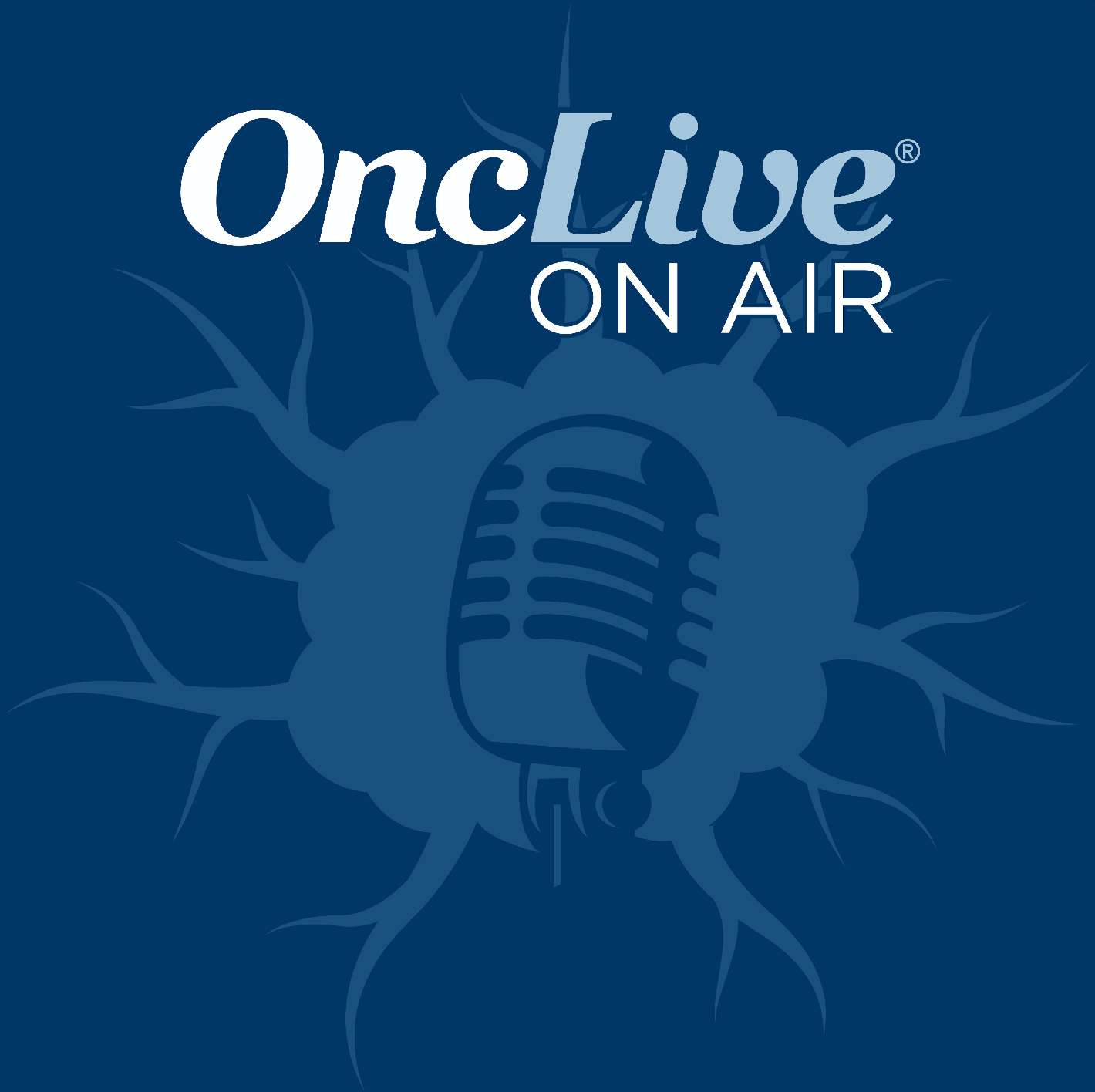Article
Frontline Nivolumab/Ipilimumab Combo Improves OS in Advanced NSCLC
Author(s):
The first-line combination of nivolumab and ipilimumab led to a clinically meaningful improvement in overall survival versus chemotherapy in patients with advanced non–small cell lung cancer, regardless of PD-L1 expression.
Solange Peters, MD, PhD

Solange Peters, MD, PhD
The first-line combination of nivolumab (Opdivo) and ipilimumab (Yervoy) led to a clinically meaningful improvement in overall survival (OS) compared with chemotherapy in patients with advanced non—small cell lung cancer (NSCLC), regardless of PD-L1 expression status, according to a final analysis of part 1 of the phase III CheckMate-227 trial that was presented at the 2019 ESMO Congress.1,2
In a cohort of patients with PD-L1 expression ≥1%, the median OS with nivolumab and ipilimumab compared with chemotherapy was 17.1 months and 14.9 months, respectively (HR, 0.79; 97.72% CI, 0.65-0.96; P = .007). Moreover, the median OS was 17.1 months with the combination and 13.9 months with chemotherapy in patients regardless of PD-L1 expression status (HR, 0.73; 95% CI, 0.64-0.84).
"CheckMate-227 met its primary endpoint of OS in patients with PD-L1 ≥1%, and is the first phase III study to show that PD-1 and CTLA-4 inhibition is effective in NSCLC," lead study author Solange Peters, MD, PhD, a professor at the Centre Hospitalier Universitaire Vaudois in Lausanne, Switzerland, stated in a press conference during the meeting. "The improvement was seen beyond the primary endpoint in unselected patients and truly represents a new [first-line treatment] option."
The open-label CheckMate-227 trial is a multi-cohort study comprised of nivolumab-based regimens compared with chemotherapy in patients with stage IV or recurrent NSCLC who had received no prior treatment. In part 1 of the trial, there were 2 cohorts: patients with PD-L1 expression ≥1% (part 1a) and PD-L expression <1% (part 1b).
In part 1a, 1189 patients were randomized 1:1:1 to receive chemotherapy (n = 397), nivolumab alone (n = 396), and nivolumab plus low-dose ipilimumab (n = 396). In part 1b, 550 patients were randomized to nivolumab/low-dose ipilimumab (n = 187), chemotherapy (n = 186), and nivolumab/chemotherapy (n = 177).
Nivolumab was administered at 3 mg/kg every 2 weeks, and in the combination arm, 1 mg/kg of ipilimumab was given every 6 weeks. Treatment was administered until disease progression, unacceptable toxicity, or for 2 years for immunotherapy.
To be eligible for enrollment, patients must have had stage IV or recurrent NSCLC, had received no prior systemic therapy, no sensitizing EGFR mutations or ALK alterations, no untreated central nervous system metastases, and an ECOG performance status of 0 or 1. Patients were stratified by squamous and nonsquamous histology.
The independent co-primary endpoints of the study focused on a comparison of nivolumab and ipilimumab versus chemotherapy and were progression-free survival (PFS) in a high tumor mutational burden (TMB) population and OS in the PD-L1 ≥1% population. Secondary endpoints included PFS and OS with nivolumab/chemotherapy versus chemotherapy in the PD-L1 <1% subgroup, and OS with nivolumab versus chemotherapy in patients with PD-L1 expression ≥50%. The minimum follow-up for the primary endpoint was 29.3 months.
Results also showed that, in the cohort of patients with PD-L1 ≥1% expression, the 1- and 2-year OS rates were 63% and 40% with nivolumab/ipilimumab and 56% and 33% with chemotherapy, respectively.
Peters also presented an exploratory analysis of the nivolumab/ipilimumab combination, single-agent nivolumab, and chemotherapy alone arms in patients whose tumors had PD-L1 expression ≥1%. Here, the median OS was 17.1 months, 15.7 months, and 14.9 months, respectively (HR for nivolumab/ipilimumab vs chemo, 0.79; 97.72% CI, 0.65-0.96; HR for nivolumab vs chemotherapy, 0.88; 97.72% CI, 0.75-1.04). The 1-year OS rates for the combination, nivolumab, and chemotherapy were 63%, 57%, and 56%; the 2-year OS rates were 40%, 36%, and 33%, respectively.
The median duration of response by blinded independent central review was 23.2 months, 15.5 months, and 6.2 months for nivolumab/ipilimumab, nivolumab, and chemotherapy, respectively. The rates of patients in response at 1 year were 64%, 63%, and 28%, respectively; the rates of those in response at 2 years were 49%, 40%, and 11%, respectively.
In part 1b of patients with PD-L1 expression <1%, the median OS was 17.2 months, 15.2 months, and 12.2 months with nivolumab/ipilimumab, nivolumab/chemotherapy, and chemotherapy, respectively (HR for nivolumab/ipilimumab vs chemotherapy, 0.62; 95% CI, 0.48-0.78; HR for nivolumab/chemotherapy vs chemotherapy, 0.78; 95% CI, 0.60-1.02) The 1-year OS rates with nivolumab/ipilimumab, nivolumab/chemotherapy, and chemotherapy were 60%, 59%, and 51%, respectively; the 2-year OS rates were 40%, 35%, and 23%, respectively.
For all randomized patients, regardless of PD-L1 expression status, the 1-year OS rates with nivolumab/ipilimumab and chemotherapy were 62% and 54%, respectively; the 2-year OS rates were 40% and 30%, respectively.
Additionally, no new safety findings of the combination were reported with longer follow-up. Grade 3/4 treatment-related adverse events were reported in 33%, 19%, and 36% of patients in the nivolumab/ipilimumab, single-agent nivolumab, and chemotherapy arms, respectively.
"We used a low dose of ipilimumab—1 mg every 6 weeks—to make it tolerable," said Peters. "Doing this led to a low rate of discontinuation and treatment-related toxicities or deaths. So, it’s a highly manageable treatment."
Previously reported findings with CheckMate-227 have been mixed. In July 2019, Bristol-Myers Squibb (BMS), the developer of the PD-1 and CTLA-4 inhibitors, announced that part 2 of the trial did not meet its prespecified primary endpoint of OS with the combination of nivolumab and chemotherapy compared with chemotherapy alone in patients with nonsquamous NSCLC, regardless of PD-L1 expression status (HR, 0.86; 95% CI, 0.69-1.08).3 The median OS for patients treated with nivolumab/chemotherapy was 18.83 months versus 15.57 months for chemotherapy, and the 1-year OS rate was 67.3% compared with 59.2%, respectively. Additionally, in an exploratory analysis of patients with squamous NSCLC, the median OS was 18.27 months for first-line nivolumab plus chemotherapy compared with 11.96 months for chemotherapy (HR, 0.69; 95% CI, 0.50-0.97). No new safety signals were observed.
Additional data of the trial showed challenges with its validity of high TMB (≥10 mut/megabase [Mb]) as a biomarker to predict immunotherapy response, the other co-primary endpoint of CheckMate-227.
In January 2019, BMS withdrew its supplemental biologics license application (sBLA) for the combination of nivolumab and ipilimumab for the first-line treatment of patients with advanced NSCLC with TMB ≥10 mutations/Megabase (mut/Mb) following discussions with the FDA.4
The agency had initially accepted the sBLA in June 2018 based on additional data from the phase III CheckMate-227 trial, which showed that the 1-year PFS rate was 43% for patients with high TMB assigned to nivolumab/ipilimumab compared with 13% for those assigned to platinum-doublet chemotherapy.5
In October 2018, BMS submitted an exploratory OS analysis to the FDA from part 1 of the CheckMate-227 trial, which comprised a TMB <10 mut/Mb subgroup of patients with stage IV or recurrent NSCLC who had not received prior therapy.
With these updated findings, the FDA extended the review period by 3 months, which made the new action date May 20, 2019. Yet, the new data showed no difference in survival outcomes between patients whose tumors had high or low levels of TMB.
Peters spoke to the challenges of identifying a predictive biomarker of response to immunotherapy in this trial.
"No biomarker is able to select for the best patients to respond," she explained. "PD-L1 is not a biomarker in that OS endpoint, high TMB and low TMB is not, and the combination of those is not. We don’t have any biomarker for nivolumab/ipilimumab versus chemotherapy in that trial. We still struggle a little bit with new biomarkers and to know if they can be predictive or prognostic or both."
Marina Chiara Garassino, MD, medical consultant, Medical Oncology Division, Fondazione IRCCS Istituto Nazionale dei Tumori, Milan, Italy, commented on the updated findings during the ESMO press conference.
"These data show we have a new treatment option for the first-line treatment of metastatic NSCLC, to add to the current treatment options of chemotherapy plus immunotherapy regardless of PD-L1 level or immunotherapy as single agent for patients with PD-L1 scores of at least 50%. We don’t yet know if the findings are practice changing. We need to understand which treatment is best for each patient: chemotherapy plus immunotherapy, immunotherapy alone, or immunotherapy plus immunotherapy."
References
- Peters S, Ramalingam S, Paz-Ares L, et al. Nivolumab + low-dose ipilimumab versus platinum-doublet chemotherapy as first-line treatment for advanced non—small cell lung cancer: CheckMate-227 part 1 final analysis. Presented at: 2019 ESMO Congress; September 27 to October 1, 2019; Barcelona, Spain. Abstract LBA4.
- Hellmann MD, Paz-Ares L, Carbo RB, et al. Nivolumab plus ipilimumab in advanced non—small-cell lung cancer [published online September 28, 2019]. N Eng J Med. doi: 10.1056/NEJMoa1910231.
- Bristol-Myers Squibb Provides Update on Part 2 of CheckMate-227. Bristol-Myers Squibb. Published July 24, 2019. https://bit.ly/32PyxXu. Accessed July 24, 2019.
- Bristol-Myers Squibb Reports Fourth Quarter and Full Year Financial Results. Bristol-Myers Squibb. Published January 24, 2019. https://bit.ly/2FMWGpr. Accessed January 24, 2019.
- Hellman MD, Ciuleanu T, Pluzanski A, et al. Nivolumab (nivo) + ipilimumab (ipi) vs platinum-doublet chemotherapy (PT-DC) as first-line (1L) treatment (tx) for advanced non-small cell lung cancer (NSCLC): initial results from CheckMate 227. Presented at: 2018 AACR Annual Meeting; April 14-18, 2018; Chicago, Illinois. Abstract CT077. 2017;35(suppl 4S; abstr 350).








